Displaying items by tag: kotor
November 19, 2020 - The celebration of the feast of Our Lady of Health, November 21, which in Boka is celebrated not only by Catholics but also by believers of other confessions, is a real example of this area's ecumenical characteristics.
On the same day, Orthodox believers celebrate the day of the Holy Archangel Michael, and Kotor and Tivat commemorate the Municipality's Day in honor of their liberation from the occupying power in the Second World War. It is unlikely that Our Lady of Health will impact the epidemiological situation on her day, but this year it may be more than usually relevant to recall her cult in Boka, which arrived through Venice.
The cult of Our Lady of Health is related to the plague epidemic that reigned in the Middle Ages, which killed many people and devastated the economy. The health and economic situation in the context of the time is therefore in some ways comparable to our current circumstances. Then, Venice asked the Mother of God for help, and when the plague stopped, the Senate decided to build a church on the Grand Canal called Santa Maria Della Salute, i.e., Our Lady of Health, for the Blessed Virgin Mary, who pulled Venice out of its horror.
The cult spread to Dalmatia, where one of the most beautiful churches of Our Lady of Health was built in Zadar. Later history connected it with Boka - Vicko Zmajević from Perast built a central altar in the 18th century, which still adorns this church. Churches of Our Lady of Health exist in Split, Dubrovnik, and Kotor.
The Church of Our Lady of Health at the Fortress of San Giovanni in the minds of the citizens of Kotor then, and today, remains extremely important and is a kind of pilgrimage church that is part of the collective consciousness of the whole of Kotor and the Bay.
"This is still one of the most beloved shrines of Our Lady in the Diocese of Kotor. On the feast of Our Lady of Health on November 21, hundreds of believers make a pilgrimage there, which is a lot considering that this does not include those who want to, only those who can"- it was pointed out on the occasion of the promotion of the book "Kotor Votive Shrine of Our Lady of Health" by the late Vicar of the Kotor Diocese, Don Anton Belan.
The Church of Our Lady of Health in Kotor, located halfway to San Giovanni, dates from the 15th century but was rebuilt over time. It is first mentioned in archival documents in 1518.
It has a deep open narthex in the shape of a Gothic arch and is vaulted with a Gothic vault. The rest of the building belongs to the Baroque period. It has a small gothic rosette on the front. The entrance door is made of wrought iron and was mentioned as early as 1745. The Church of Our Lady of Health has modest dimensions of 9.75 x 4 m, and the narthex 3.06 x 4.65 m. It is paved with red and white stone from Đurić near Kamenar, from which part of the pavement in the church of St. Mark in Venice was built. The church has a sacristy with a stone vault, mentioned in the 18th century. Five steps raise the altar space.
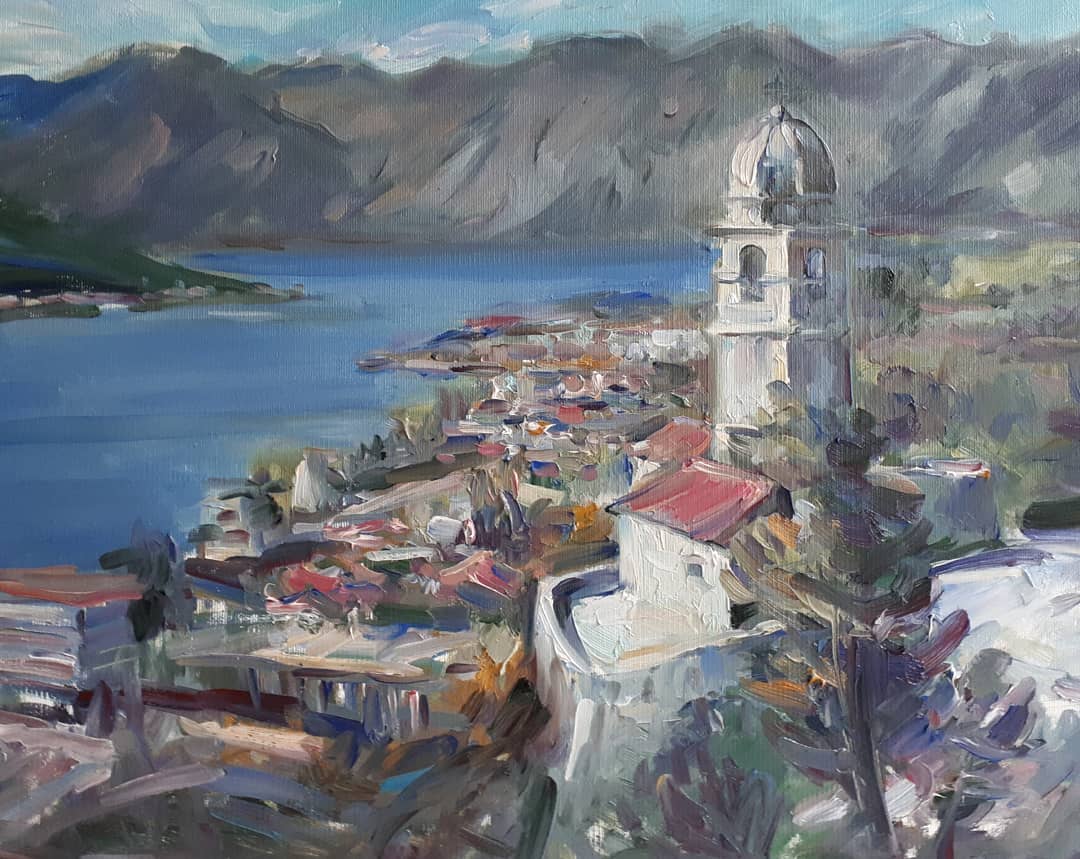
Our Lady of Health Church, Painting by Nedeljko Simanić
The Church of Our Lady of Health watches over the city, completing nature and man's magnificent architecture. The bell tower was completed on March 10, 1727, when Bishop Hyacinth Zanobetti gave St. Gaudencia and Veneranda relics to be placed at the foot of the cross of the bell tower. The bell tower contains three bells made in 1930 in the famous bell foundry De Poli from Vittorio Veneta (Italy), founded in 1453. The bell tower is 18 meters high with a newly erected cross. It has an octagonal stone dome with prominent ribs.
The church is dedicated to the Presentation of the Blessed Virgin Mary in the temple. It is celebrated in a particular way as Our Lady of Health on November 21. In the church, there is the tomb of the famous Kotor family Bolica, and under the narthex is the tomb of another Kotor citizen, Count Anton Luković.
The Church of Our Lady of Health can be reached by a picturesque path that is adorned by four small chapels, with 520 steps to climb.
"The Church of Our Lady of Health warned, and in a way still does today, that the mighty walls and courage of the defenders alone are not enough to protect the city, but God's protection is also needed with her motherly intercession," the Kotor diocese said.
At the end of this story of the famous sanctuary of Boka's people, we can indeed tell you: whether you are believers or not, whether on the occasion of November 21 or at some other time - head to San Giovanni and find this church. While enjoying the atmosphere of Our Lady of Health's spacious porch, in the archives also called Our Lady of Rest, you can appreciate one of the most beautiful views of the Bay of Kotor. It is also an opportunity to pause for a moment to feel the history of the ancient city and its citizens' destiny through time.
Cities with archives that preserve the teachings of centuries, such as Kotor, know that ugly times come and go. Kotor has defeated numerous epidemics in the past. Some will say this is thanks to the intercession of Our Lady of Health. If that is indeed true, may her feast bring us some help also this year.
Source: Kotor Diocese
November 6, 2020 - One of the most popular global series, The Nomad, will be filming from today, until 15th November in Montenegro. The show is produced by the famous Canadian photographer and author Ryan Pyle, and the filming will be carried out in collaboration with the National Tourism Organization (NTO).
The series, according to the NTO, focuses on cities, gastronomy, local customs and people.
"After Heidelberg in Germany, Valletta in Malta and Dubrovnik in Croatia, the author has chosen Montenegro for the series’ next destination. The episode The Nomad - Boka Bay is being filmed in the area of Boka Kotorska, as chosen by the author, with a focus on the city of Kotor," the NTO said in a statement.
They added that, in line with the specific concept of the show, the destination will be presented to an audience of millions, through interviews with the local population on topics related to history, culture, gastronomy, personal life experience and professions.
"Montenegro, with its diverse natural beauty, is becoming increasingly popular among travellers around the world, but less is known about its rich history and authentic stories that locals will share. At Ryan Pyle Productions, we are excited to bring these stories to life and explore everything that Montenegro and the Bay of Kotor have to offer,” said Pyle.
During the filming of the episode, the TV crew will, among other things, have the opportunity to try their hand at preparing traditional Montenegrin dishes, visit the Kotor market, olive groves and several rural households. They will learn about the production of craft beer and the tradition of making wooden boats, and discover what’s on offer for recreation and active holidays in the great outdoors.
The NTO highlights that the television series The Nomad is broadcast through one of the two largest global streaming channels, Amazon Prime, with over 150 million subscribers. The episode The Nomad - Boka Bay will be broadcast via Amazon Prime in the US, UK and Germany.
They add that the episode will also be available through Ryan Pyle’s YouTube channel and his social media profiles with an impressive number of followers, as well as through China’s most influential social network Weibo.
"The 46-minute episode of The Nomad - Boka Bay will premiere next year, and given the expected audience for the series through TV broadcasts and digital channels, it is estimated that this tourist report will be of great importance for promoting Montenegro as a quality tourist destination on a global level," the announcement states.
HRB
October 7, 2020 - Education is only one way in which our lives have changed since the start of the Covid-19 outbreak. In these uncertain times many of us, parents and educators alike, are wondering what the consequences will be for our children - both in terms of what, and how, they are learning. In a first installment on the topic, lifelong educator, teacher trainer and language school owner Sue Dixon gives us some reassurance that all is "not lost"!
During these past COVID months there has been a great deal of debate about whether our children have suffered from ‘lost learning.
Online learning hasn’t suited everyone, especially primary aged children and many parents tell me how difficult it is to motivate children to learn at home. Many teachers haven’t enjoyed it much either!
So, what if children haven’t learnt how to do long multiplication or how to use adverbial phrases this year? Is that a serious loss of learning – I mean really? Given the circumstances around the world I don’t think so. With the right mindset, and positive teaching environment these are things that children can catch up. The first priority is to build confidence, re-establish routines and instil good dispositions and habits for learning.
I have recently embarked on a new education adventure (I have had many adventures it is true to say) in Kotor; Thinking Child Tuition Centre.
I am excited and privileged to have created this opportunity to teach individuals and small groups, to be able to develop those necessary thinking skills for learning in a focused and personalised way. I am confident that children’s learning will not be ‘lost’ for long.
I wish all teachers, families and children the very best learning experiences in the coming weeks and months.
Thinking Child Tuition
September 4, 2020 - The Strategy for the Development of the Maritime Economy for 2020 to 2030, recently adopted by the Government of Montenegro, aims to improve business in ports and attract investments. One part of the strategy refers specifically to the port of Kotor, and a project to modernise berths in the port. At the same time, the strategy includes options to develop currently underused ports, such as Risan and Zelenika.
The Port of Kotor is divided into two basic sections - the port and the marina. The operational zone of the waters of the Port of Kotor covers a total area of approximately 52,000 m2. The operational shore for mooring ships and mega yachts consists of two berths, with a third on the north side of the operational shore used for mooring smaller vessels, as well as for mega yachts during free traffic and stern-berthing periods.
The operational shore can accommodate ships of approx. 250 metres long, depending on the draft. For ships no longer than 300 metres, planning documentation has been prepared for a mooring pile 80 metres from the end of the current operational area.
To keep up with trends in the cruising industry, and the need to accommodate ever larger vessels - of up to 350 metres, and also provide a greater degree of security for berths, a mooring system for cruise ships on mooring buoys is proposed. These mooring buoys will be of up to 6 metres in circumference, spaced at a distance of about 420m.
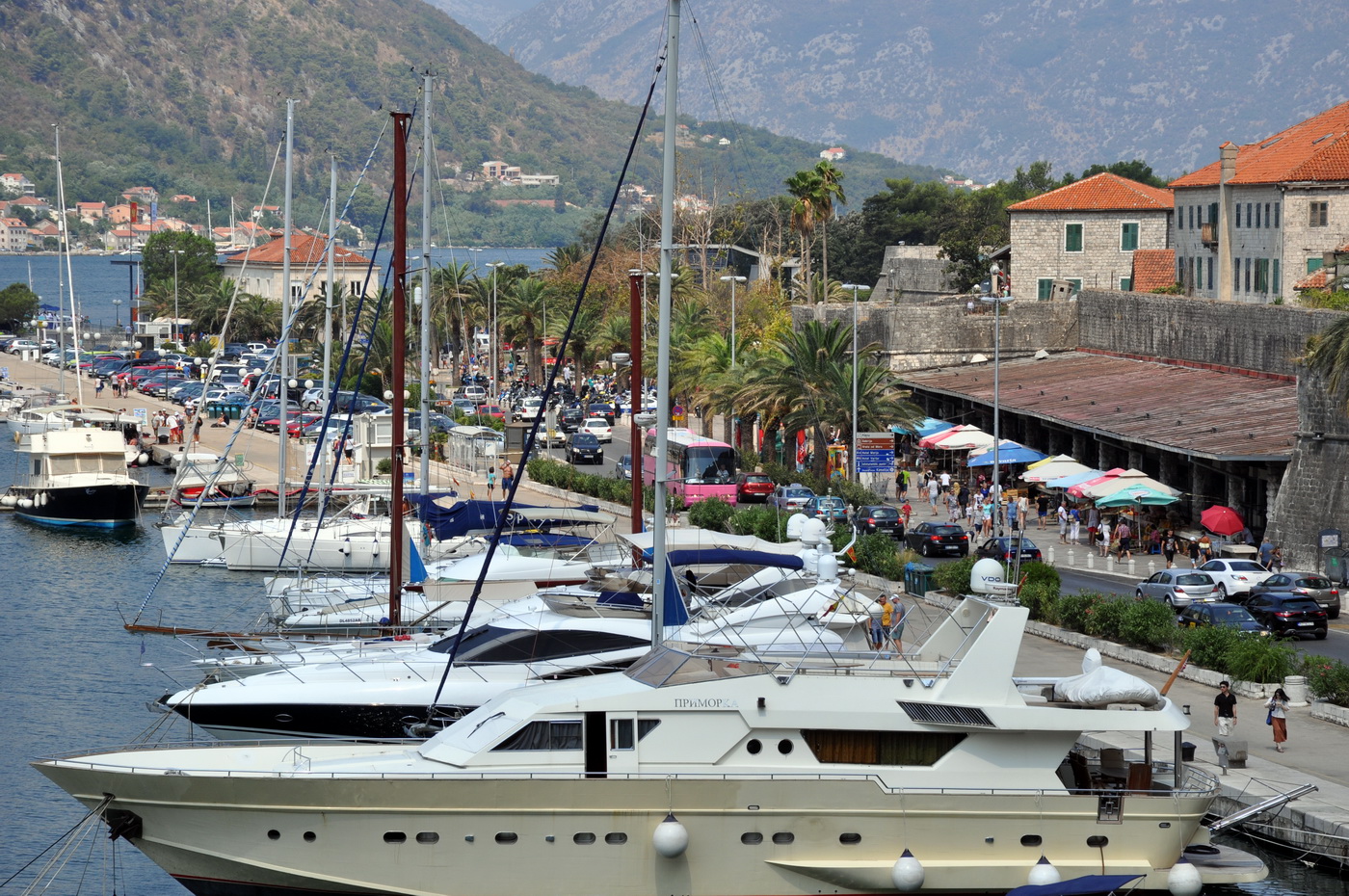
Kotor - photo Boka News
The company Luka Kotor AD has operated the port for many years, providing for mainly cruise ship passenger traffic, the strategy recalls. The port infrastructure is in working condition and is regularly used for the docking and supply of vessels.
The strategy includes plans to adapt, reconstruct, build and equip the port of Kotor as a trading port open for international traffic, with an emphasis on the tourist-passenger sector. There are also plans to increase the capacity for ships berthing at port and providing cruise ships mooring at anchor, by installing temporary buoys.
An overhaul of the marina includes the improvement of anchoring, mooring, electrical, and water supply systems, as well as constructing access bridges that have a built-in access control system.
“The modernization of the marina infrastructure will ensure improvements to the billing system itself, as well as preparation of the berth cadastre, and reservation, so that the user of marina services provided by Luka Kotor AD can settle all payments at a toll station that will be operational 24/7,” the documentation states.
The information further states that all pontoons will be modular, which in practice means that, depending on future plans and projection of berth occupancy, capacity could be expanded.
The estimated value of the investment project is EUR 500,000.
The drafting process of the strategic document also recognized the possibility, and potential need, to suitably develop the neglected or underused port infrastructure. Here, the ports of Risan and Zelenika are highlighted as potential that should be tapped for the development of the overall maritime economy.
The port of Risan has 75 metres of operational shore, is about 5 meters deep and has a mooring 75.5 metres long, which was previously used for local maritime traffic. The area of its open operational shore is 1,330 m2 and has four mooring cleats. It also has the possibility of mooring vessels of up to 17 metres long, ie. about five vessels of average size parallel to the coast.
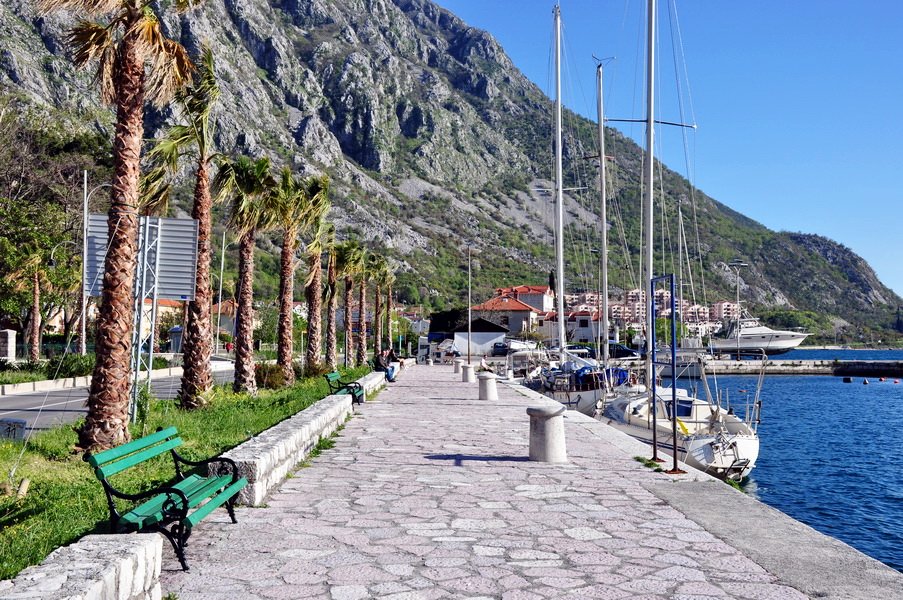
RIsan - photo Boka News
“The public company Morsko Dobro has issued a public call for tender for the preparation of a study on the construction conditions for the Port of Risan, the necessary investments in infrastructure equipment and maintenance, for the preparation of an economic and financial analysis and the concession act,” the strategy states.
The study should include a survey and estimate of works on the maintenance of the facility and possible renovation for a period of 20-30 years, and equipping the marina with pontoons for yacht mooring. Also, the document should contain information on the necessary infrastructural equipment of the marina, installation of a pontoon breakwater, as well as all connected systems for sanitation and drainage of wastewater, and a summary of estimates for works.
The Port of Risan is planned as a local and marine tourism port. Information given states that the plan for granting concessions for local ports adopted already by the Government of Montenegro in 2016 envisaged granting concessions to the port of Risan. Through the concession model, infrastructural equipment will be provided, alongside modernization, maintenance, investments in and use of the port - i.e. provision of port services. The capacity of the marina will be a maximum of 150 berths, while a part of the port is defined as a communal mooring with 30 communal berths.
The Port of Zelenika has the function of a trading port open to international maritime traffic and, accordingly, that of a border crossing at which foreign maritime vessels can perform the necessary procedures when entering the territorial waters of Montenegro.
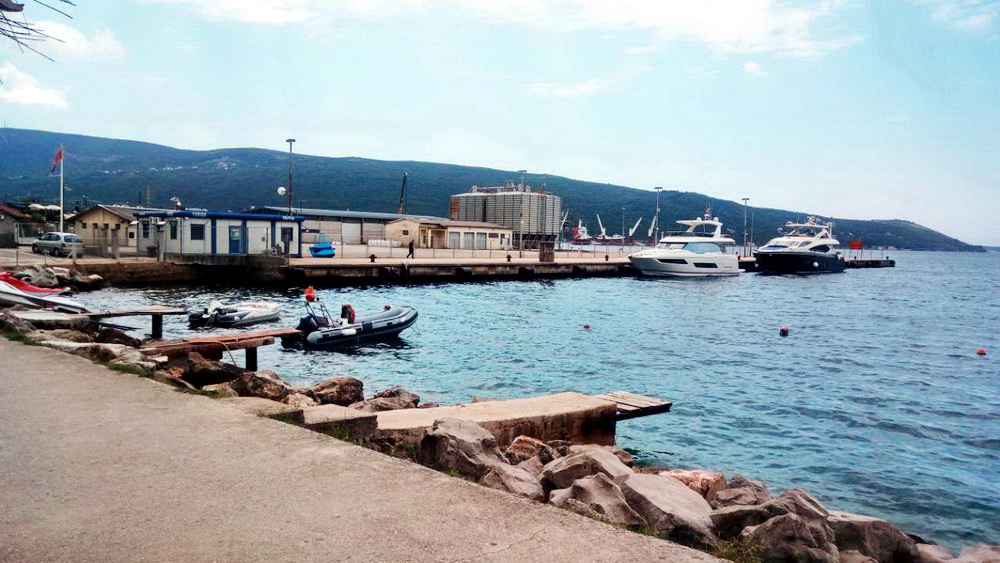
GP Zelenika - Photo Boka News
- Safe and unhindered entry to the port is possible due to the significant depths at the port approach, and the absence of obstacles for semi-navigation. The border crossing uses the 134-meter-long NW port pier and is physically separated by a fence from the rest of the port. At the pier of the border crossing, relevant mooring, electricity and fuel infrastructure are also provided for.
- The port of Zelenika still does not meet all the standards provided by law and bylaws necessary for passenger traffic, but there is certainly significant room for further development of the port and opening it up to accommodate ships as an alternative to Kotor - the Government document states.
HRB
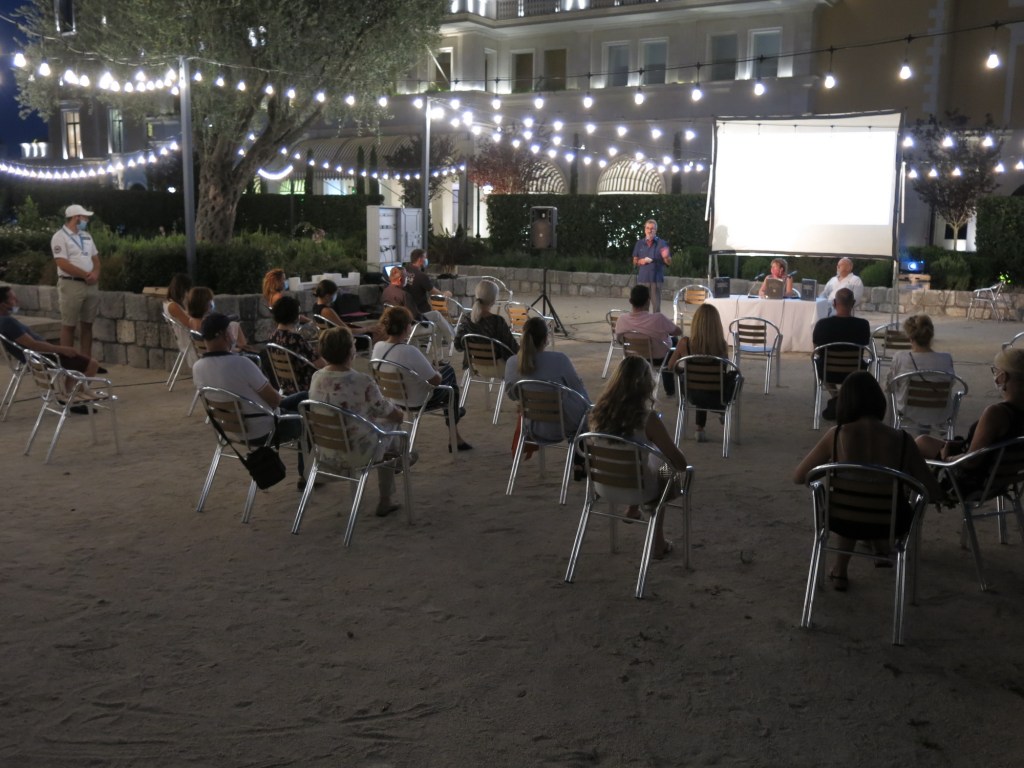
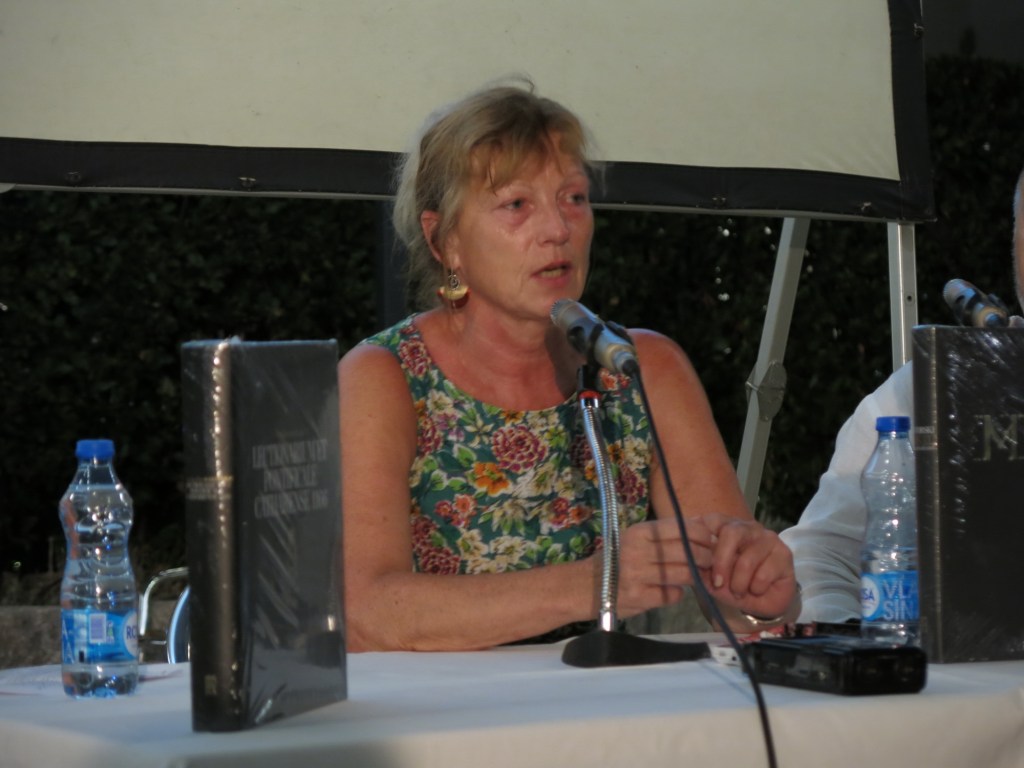
August 11, 2020 - As part of the Open Kotor Squares programme organized by the Municipality of Kotor, vocal group Škuribanda and the klapa ensemble Incanto will perform at Škaljari Square on Wednesday, 12th August, from 9am to 1030am, while a concert by Acoustic Jukebox will take place from 9pm to 10pm on Flour Square.
On Thursday, 13th August, Jelena Mijanović will perform Kotor Notes on Flour Square from 7:30pm to 8:30 pm. On the same day, from 7 to 8 pm, at the church of St. Clara/Anton a concert will be given by the mandolin orchestra Tripo Thomas.
On Friday, 14th August, from 10am to 11am, Petar Bukilica will give a concert on Škaljari Square, and a concert by the group Nitro will be held on the Square of Arms from 9pm to 10pm.
On Saturday, 15th August 15, from 830am to midday on Cinema Square, a "Painting Square" will be organized (for amateur artists and painters), while a concert by the klapa ensemble Maris will take place between 8pm and 9pm on Museum Square.
On Sunday, 16th August, from 730pm to 830pm on Flour Square - Kotor Notes. Performance by Jelena Mijanović.
According to the Municipality of Kotor, all the aforementioned performances will be held in compliance with measures of the Government of Montenegro and the National Coordination Body for Infectious Diseases.
HRB
August 10, 2020 - A conference entitled "Festivals in Times of Crisis", held as part of the KotorArt Don Branko's Music Days, will take place tonight, starting at 8pm, on Cinema Square in Kotor.
The organizers of the festival highlight that directors of several festivals from across Montenegro and the region will speak at the conference, including Ksenija Popović (Bar Chronicle, Bar), Ana Vukotić (FIAT, Podgorica), and Ivan Radojičić (Festival of Street Musicians, Nikšić), as well as Zoran Rakočević (Korifej, Kolašin), and Dora Ruždjak Podloski, Artistic Director of the Dubrovnik Summer Festival.
A representative of the Ministry of Culture, the Head of the Directorate for Cultural and Artistic Creativity, Dragica Milić, as well as the State Secretary of the Ministry for Sustainable Development and Tourism, Damir Davidović, will also speak at the conference. The host and moderator of this conference will be the Director of KotorArt Don Branko's Music Days, pianist Prof. Ratimir Martinović.
"Speakers will present their views on the topic and this year's plans with regard to the epidemiological situation, following which there will be a debate on the position, impact, significance, place and meaning of festivals in times of crisis. The debate will unpack current and future formats, the ways in which festivals communicate with their audience, as well as defining a new, and hopefully better - normal, also in terms of the life of the festival," a statement by KotorArt Don Branko's Music Days reads.
On Tuesday 11th August, at 930pm on Cinema Square, one of the first theatre performances in Montenegro since the beginning of the pandemic is planned, in cooperation with the Dubrovnik Summer Festival.
"An original project entitled 'Mara and Kata' by Saša Božić, Curator of the drama programme within the Dubrovnik festival, is about a duo of gossipmongers who criticize everyone with their specific humour, comic statements, original language and absurd revaluation of everyday wisdom. Nataša Dangubić and Doris Šarić Kukuljica have the audience in stitches, and never fail to make a joke at their own expense," the play’s press release notes.

Dua Bulatović Nikčević to perform tomorrow (Photo: KotorArt)
On Wednesday, 12th August, also at 930pm on Cinema Square, there will be a performance by the famous Montenegrin guitar duo of Srdjan Bulatović and Darko Nikčević. The duo will, in addition to their classic, well-known repertoire, also present songs from their latest album called Peninsula.
All programmes, it is emphasized, will be held in front of a limited audience, respecting the measures of the NKT and the Institute of Public Health. The programmes are also broadcast directly online, through KotorArt's profiles and via Facebook and Youtube.
Source: RTCG
6 August, 2020 - The project "Restoration of the Fortification Heritage of Montenegro - Kotor City Ramparts" has been included in the Consolidated List of Priority Infrastructure Projects of Montenegro, the Municipality of Kotor has announced.
The Western Balkans Investment Framework has announced its twenty-fourth call for proposals, with funding from the instrument being distributed based on the submission of project proposals. Within the application preparation and the proposal itself, the project’s proponent is required to actively cooperate with the relevant ministry for their particular area, and the proposed project must be on the Consolidated List of Priority Infrastructure Projects. The Municipality of Kotor has made a key step towards obtaining funds to the tune of 3,000,000 euros, by way of preparation of project-technical documentation, but it has also conducted a series of intensive negotiations with the Ministry of Culture. The National Investment Commission at its session of 29th July 2020, chaired by the Prime Minister Duško Marković, considered and adopted an updated Consolidated List of Priority Infrastructure Projects, which now includes the project 'Restoration of the Fortification Heritage of Montenegro - Kotor City Ramparts'.
Projects financed by this instrument are based on a division of funding provided on the one hand by a grant for the development of project documentation, which is awarded by the European Commission through WBIF, and on the other, for the implementation of the infrastructure project itself, by a combination of a loan from one of the international financial institutions and grants from EU instruments.
The Municipality of Kotor has also initiated the process of obtaining a letter of intent from one of the international financial institutions for financing infrastructure works on the project "Restoration of the Fortification Heritage of Montenegro - Kotor City Ramparts". This letter and consultations with the Ministry of Finance on budget planning are a prerequisite for submitting project proposals under the Western Balkans Investment Framework call for proposals.
Alongside fulfilling the preconditions for the use of funds from the WBIF instrument, the Municipality of Kotor is already actively working on their application for a grant to finance the preparation of project documentation for the entire 4.6 km long Kotor ramparts worth 3 million euros. “The public will be kept informed about the progress made on this important project"- the Municipality of Kotor has announced.
HRB
August 3, 2020 - 287 bins for electronic waste and 7 rubbish containers are to be delivered and installed in specific locations as part of the cross-border project "YOUth drive - Program for raising awareness on proper waste management and empowering legislators for taking action". The program is implemented under the IPA Cross-border Cooperation Program BiH - Montenegro, and funded by the Delegation of the European Union to Bosnia and Herzegovina, West Herzegovina County, and Boka Kotorska.
A total of 192 schools are involved through the educational project, aimed at students from sixth to ninth grade, and high school students. Waste collection activities will be organized on identified illegal landfills in agreement with cities and municipalities, and research will also be carried out on the situation on the ground, which will serve as a guideline for future activities within cities and municipalities. A web platform will also be launched. The goal of the project is to actively contribute to the proper management of waste; work will also be implemented on the protection of waterways in the areas involved in the project activities. In cooperation with schools, the project will primarily aim to raise awareness among young people, who through their knowledge and action in the future, will be prominent actors and influencers in the area of environmental protection. The project will also create a basis for improvement and refinement of existing legislation in this area.
The project is implemented within the IPA Cross-border Cooperation Program Bosnia and Herzegovina and Montenegro, funded by the European Union, and with a joint partnership agreement signed between project partners. The signing of the agreement on the partnership and the delivery of project activities took place on November 15, 2019. The timeframe for project delivery is 15th November, 2019 to 15th May, 2021, while the total value of the project is 279,200.00 euros, of which the European Union is financing 232,530.00 euros.
The project partners are non-governmental organizations The Association for Development, Environment and Culture EKO ZH from Široki Brijeg as the project leader, and Naša Akcija, a non-governmental organization from Boka Kotorska, based in Kotor.
The European Union is funding this project with the aim of strengthening and raising awareness among young people and the entire community of Montenegro and Bosnia and Herzegovina on the proper disposal of waste, and on environmental protection.
The "YOUth Drive" project will be presented in Kotor on Wednesday, 5th August, starting at 10 am at the Cattaro Hotel in the Old Town, as announced by NGO Naša Akcija.
HRB
July 26, 2020 - This year's Fašinada was held following all the measures and rules to stop the spread of coronavirus, but this great tradition remains unbroken.
Once again- Ranko Maraš is inviting us to take a look from his original perspective at the uniqueness of Bokelian natural and cultural heritage.






